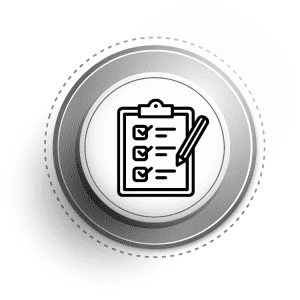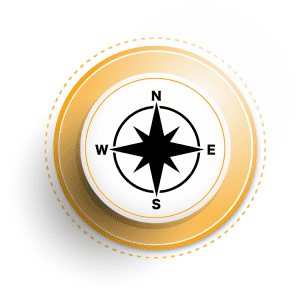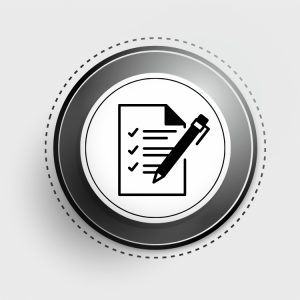Culture Forge Structure
If you’re committed to making meaningful changes to the way your organization recruits,
hires, and develops people, the first step is to understand the starting point.
Much like your personal health, the process begins with determining the symptoms or pain your organization is experiencing.
Our assessment tool collects your responses and then, based on our years of experience working
with small businesses, provides a prescription for the areas and activities most in need of attention.
Click below to begin your Culture Forge experience.
Diagnostic Assessment
The Diagnostic Assessment is designed to help users determine which of the 13 segments within the system are likely contributors to the problems or symptoms they are experiencing. Based on descriptions provided of consistent problems the company is having in finding, attracting, hiring, and retaining top-level talent, the matrix points the user to the segments that are most likely to be found as root causes of the issues.
Each segment consists of three elements designed to help the user assess their current performance, provide a detailed explanation of what should be in place, and provide a to-do list of actions to be taken to remediate shortcomings in specific areas.
Assessment
When referred to a particular segment by the Diagnostic Matrix, the user begins by completing the Assessment for that segment.
This initial element for each segment consists of a series of statements describing what should be in place, or what owners and managers should be doing, to attract and retain top talent. Each statement is to be rated by the user at one of the following status levels, based on the actual situation at their company.
Completing the Assessments for the elements that are regarded as likely weaknesses will help establish priorities for the actions to be taken.
Guide
The Guide is a reference document that provides a detailed explanation of what is required, what should be in place, and the tools to be used. Based on the Assessment ratings, refer to the section of the Guide that addresses that topic. For example, the Guide for the Company Culture segment includes the following sections:
• Owner Accountability for Culture
• The Role of Management
• Mission, Vision, and Core Values
• Accountability
• Performance Management
• Training and Employee Development
• Teamwork
• Culture and Trust
• Metrics and KPIs
Procedures are outlined, and documents and templates are included, that support specific processes. In some cases, the user will be referred to other segments within the system for more details.
Workbook
The Workbook is a planning tool with the purpose of providing detailed action steps that must be executed to put in place the processes, procedures, and behaviors defined in the Guide.
Similar to the business objectives and tactics that are part of Violand’s business planning process, the templates provided include areas to identify the person responsible, due date, and status of the action.
Each section in the Guide has a corresponding section in the Workbook.
Application
Effective use of these tools requires prioritizing and focusing on a manageable number of issues at one time. Results from the Diagnostic Matrix and Assessments provide guidance on where to focus initially. As actions are executed and changes implemented, review the Matrix and Assessments to determine what the next priorities should be.
Select a small number of issues to address, assign responsibilities, and set completion dates. Status reports on the action items should be part of the agenda for regularly scheduled management or leadership team meetings.
Depending on the level of need, these changes may be part of the annual business plan developed for your company.
We recommend companies review the Assessments annually. Reflect improvements in the areas where changes are made by updating the status of each action on the Assessments. This will prompt you to renew the cycle and determine the next set of high-priority issues.
Performance Tracking
It’s important to track performance before and after changes have been implemented. Use selected metrics (KPIs) from those recommended in the respective Guide documents to establish a baseline for your company before implementing the changes. After improvements are made, continue to use the same metrics to measure the impact. Recognize that there may be a significant time lag for the effects of some changes to be noticed.
Get Started.
If you’re committed to making meaningful changes to the way your organization recruits,
hires, and develops people, the first step is to understand the starting point.
Much like your personal health, the process begins with determining the symptoms or pain your organization is experiencing.
Our assessment tool collects your responses and then, based on our years of experience working
with small businesses, provides a prescription for the areas and activities most in need of attention.
Click below to begin your Culture Forge experience.





